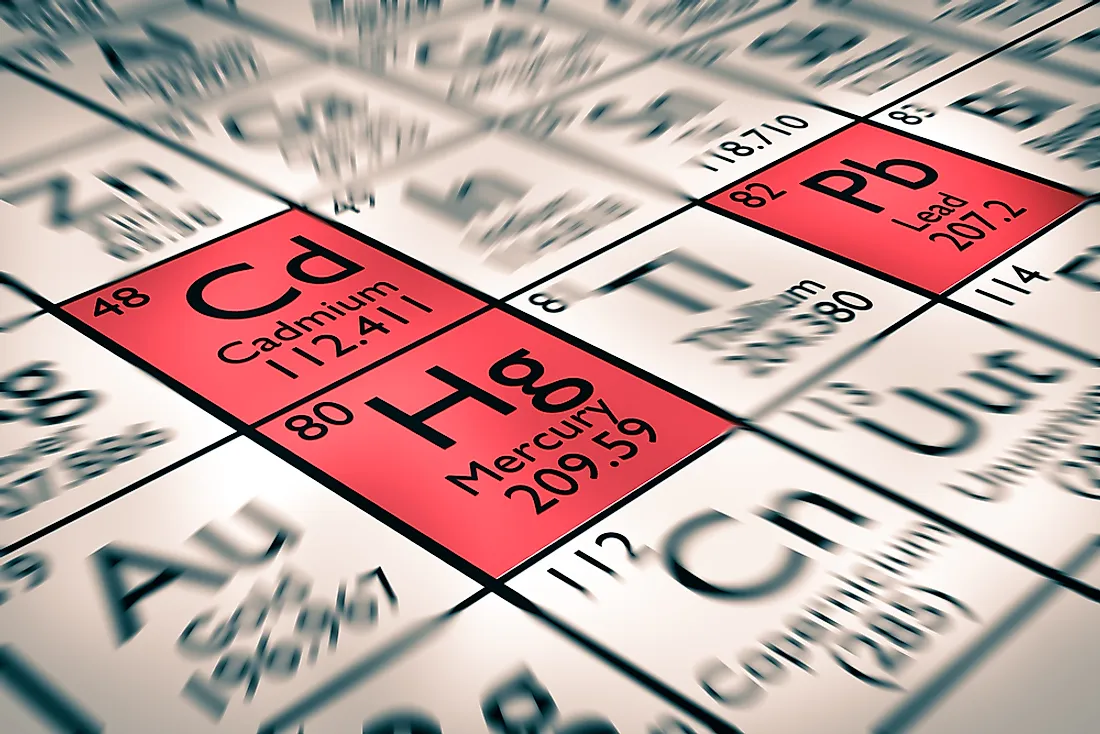The Six Most Toxic Pollutants In The World

Pure Earth, a global leader in the cleanup of toxic pollutants in the environment, has compiled a list of the six pollutants that impose the biggest threats to human health. These pollutants together affect the health of 95 million individuals globally. 14.7 million DALY's are lost in the middle and low-income nations of the world due to the health issues caused by these pollutants. The list has been named the Top Six Toxic Threats 2015. The 6 pollutants are as follows:
1. Lead
26 million people are threatened by lead pollution, as estimated by Pure Earth. Lead is a heavy metal that has been mined for use in a variety of products for household and industrial use. The metal is used in paints, pesticides, ammunition, pipes, car batteries, etc. Lead is also used to form alloys with other metals. Although the metal has been used for centuries, it was only in the recent decades that the ill effects of lead pollution have become known to people. Most of the world’s lead pollution is caused by the effluents released by a few industries like the ULAB recycling, mining, metal smelting, and the pigment industry. Over 800 sites across the world have been recognized as significant sources of lead pollution that threaten the health of the people living in those regions. Toxic levels of lead in the human body can trigger both chronic and acute health conditions. Exposure to lead has been associated with developmental defects in children and birth defects in newborns. Other adverse health effects associated with exposure to toxic concentrations of lead in both children and adults include anemia, neurological damage, infertility, high blood pressure, etc. Extremely high exposure to the metal can also trigger the death of the victim. In 2007, 18 children died of lead poisoning in Dakar, Senegal.
2. Radionuclides
According to Pure Earth, radionuclides are also one of the top six toxic threats in the world. Radionuclides occur in nature and are also artificially created by humans. These radioactive chemicals undergo decay to release radiation and radioactive particles which are highly dangerous to the health of humans and other living creatures. The time taken to decay varies with the nature of the radioactive material. It is thus necessary to handle and store radioactive waste with great caution until it decays completely. Under no circumstances should living creatures be exposed to such disintegrating radionuclides. Some of the biggest sources of radioactive waste are sourced from nuclear reactors and uranium mining activities. Although radionuclides can be responsibly used for a number of scientific and medical applications, they are most heavily used in the weapons production and energy industries. Pure Earth estimates that nearly 1 million people are threatened by radionuclide pollution in 91 sites across the world. Exposure to radioactivity triggers lethal diseases like cancers in people. Infant mortality and low-birth weights are common in populations exposed to radioactive pollutants. Other health effects of exposure to radiation include hair loss, fever, nausea, diarrhea, low blood pressure, disorientation, and even death.
3. Mercury
Nearly 19 million people in the world are at risk from exposure to mercury. The heavy metal occurs in elemental, organic, and inorganic forms. Mercury finds applications in several industries. Products such as dental fillings, thermometers, electrical switches, etc., use mercury. The process of extraction of gold also uses mercury. Both natural processes and industrial effluents are a source of mercury in the environment. 450 sites have been identified worldwide by the Toxic Sites Identification Program that relates to high levels of mercury pollution. Miners and other workers engaged in the gold mining and extraction industry are most at risk from mercury poisoning. Infants exposed to mercury might have developmental issues. Workplace associated mercury poisoning causes tremor, vision disorders, memory problems, and other health issues in the victims.
4. Chromium
With 16 million people across the world threatened by exposure to toxic levels of chromium, this heavy metal also finds its place in the infamous list of Top Six Toxic Threats 2015 complied by Pure Earth. Chromium is released into the environment around us by both natural and artificial means. The metal is found in two forms as trivalent and hexavalent chromium. The use of chromium is associated with a number of industries like leather tanning, chromate and chrome pigment production, metal processing, etc. People at more than 300 sites in the world are exposed to toxic levels of chromium in the environment. Chromium poisoning has adverse effects on the immune, respiratory, reproductive, and gastrointestinal systems. Hexavalent chromium is also carcinogenic.
5. Pesticides
Pesticides are one of the top toxic chemical pollutants today. These chemicals are used extensively to protect crops against pests and diseases to increase agricultural yields. Pesticides are also used to kill mosquitos and other vectors of tropical diseases. These chemicals usually interfere with the biological processes of the pests, killing them or preventing their multiplication. Pesticides contain a range of chemicals like lead, arsenic, rotenone, pyrethrum, etc. Pesticides are environmental pollutants that enter the food chain through water bodies via agricultural run-offs. They bioaccumulate in the bodies of humans, and other species at the apex of terrestrial and aquatic food chains. According to Pure Earth, 7 million people are exposed to pesticides globally. Some of the symptoms of acute exposure to toxic pesticide concentrations include nausea, dizziness, headaches, etc. Chronic exposure can lead to more permanent damages to health like reproductive and neurological diseases, cancers, etc.
6. Cadmium
Cadmium has also been enlisted as one of the Top Six Toxic Threats 2015 by Pure Earth. An estimated 5 million people are exposed to cadmium globally. Cadmium is released by several industrial activities like mining, refining, smelting, etc. Other activities like waste incineration, fossil fuel burning, etc., also release cadmium into the environment. Acute and chronic exposure to toxic levels of cadmium could result in choking, vomiting, headaches, pulmonary and respiratory diseases, hepatotoxicity, renal failure, etc.











